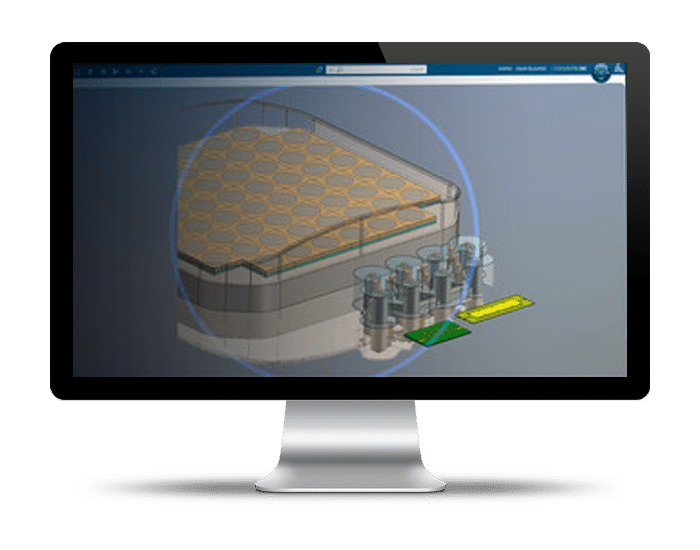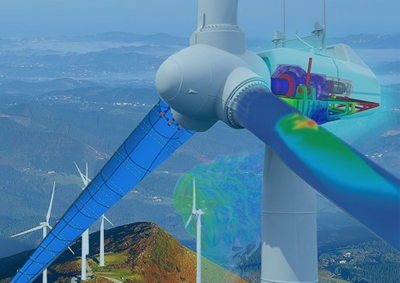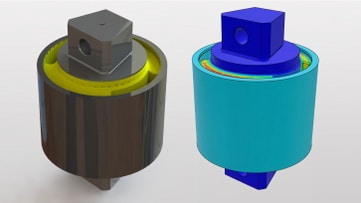
CST Studio Suite
The market-leading electromagnetic field simulation software
What Can You Do with CST Studio Suite?
All solvers are included in the standard license
Antenna Design & Optimization
Design and improve components ranging from electrically huge arrays and reflector antennas to miniature antennas printed on highly populated PCBs.
Electromagnetic Compatibility (EMC)
Find and fix potential problems from the beginning of the design process to avoid costly prototyping errors.
PCB Analysis & Design
Design and evaluate RF/microwave circuits in either schematic or 3D using tools such as SI, PI, and DDR4 wizard.
Analyze Highly Resonant Structures
Synthesize filters and design components based on waveguides and coaxial cavities. Analyze phenomena such as RF breakdown.
Highly Complex Events and Designs
Analyze highly complex criteria ranging from lightning strikes to bioelectromagnetics and magnetic marine signatures.
Low Frequency EM Field Simulation
Analyze and design electric machinery, resistive and superconducting magnets, transformers, actuators, and high voltage devices.
Antenna Design Optimization & Electromagnetic Intereference and Compliance
Antenna design is one of the main applications areas of CST Studio Suite. Users design and optimize components ranging from miniaturized antennas printed PCBs to electrically large arrays and reflector antennas. CST is well known to antenna designers in all industries, looking to achieve optimal designs.
It’s possible to analyze the antenna in free space, as well as in a more realistic environment, taking the antenna housing and mounting structure into account. CST includes efficient workflows for design optimization of the antenna, and its feed network, as well post-processing a wide variety of results.
The benefits of Active Electronically Scanned Arrays (AESAs) have made them popular in both communication applications and radars. Designing these systems is challenging and the demands it places on a simulation tool is very high.
CST has an array design functionality which makes the design of phased arrays more efficient. It includes a workflow for both the unit cell and full array simulation. CST comes with predefined array shapes and excitations patterns, but also allows you to take full control in the definition of your array.
CST includes a schematic design tool for circuit and system level simulation. A variety of component models are available, based on analytical models. The possibility to include 3D EM simulation projects easily extend the number of available components.
It’s possible to use SPICE netlists for detailed electronic models as well as measured data in the TOUCHSTONE file format. IBIS support allows accurate I/O device descriptions. In addition to this, vendor libraries of linear and non-linear components make the schematic setup easy. The circuit behavior can then be coupled into your 3D EM simulation project for accurate analysis of the system behavior.
In most countries, products must comply with EMC standards to be sold. Generally, this includes both conducted and radiated emissions, to make sure the product does not cause interference to other products – as well as susceptibility requirements to make sure that the product can work in a pre-defined electromagnetic environment. To identify a potential EMC problem as soon as possible is critical, as this minimizes the impact on the development process and release date.
Simulation is a critical tool for this, as it allows investigations before the first prototype is even manufactured. In CST, it’s possible to combine the circuit behavior of your product with the 3D geometry, making EMC assessments possible in an early stage of the design process.
Signal integrity (SI) and power integrity (PI) and Electromagnetic compatibility (EMC) are important concerns in PCB design that are closely coupled. Signal integrity effects like resonances, reflections, crosstalk, can be simulated at any stage of product development, from pre-layout to post-layout phase.
The EDA workflow in CST allows you to easily import layouts and stackups from popular tools such as Cadence, Mentor, Zuken, and Altium using ODB++ or IPC-2581 file formats. The Design rule check quickly identifies high risk areas of the board. Identify coupling paths by running a full 3D simulation of the PCB.
CST includes a tool specially designed for the fast and accurate investigation of cables in complex electromagnetic environments. It gives the possibility to investigate multiscale problems that are difficult to manage with the full-wave solvers. To give an example, cables can have dimensions in the micrometer range, and simulating those in vehicles or other complex equipment with system dimensions in the meter range.
It’s possible to define a cable harness from start to finish within CST or to have a more automated workflow by importing cable harnesses from CATIA, or else using NASTRAN or KBL files.
The placement of antennas is crucial for its performance when installed on a vehicle, or structure. The surroundings of the antenna can reflect or obstruct the electromagnetic waves and thus influence its performance.
Simulating small antennas with fine details on large structures is a challenging task, and CST includes The Hybrid Solver Task, utilizing different solvers on different parts of the model. Simulated fields are transferred between solvers through field sources, with a bidirectional link between the solvers for more accurate simulation. This benefit of this is that it’s possible to achieve accurate simulation results on regular workstations, with a reasonable simulation time.
In addition to the excellent modelling features of CST, it’s possible to include a database of over 350 antennas, transitions, and feed structures. Each antenna can be designed for a wide range of objectives – operating frequencies, gain, size, input impedance and substrate type.
The synthesis algorithms match objectives to physical parameter sets in a matter of seconds, allowing the engineer instant feedback about the expected dimensions of the antenna. These fully parametric simulation models that can be evaluated and optimized using the full wave solvers of CST.
Choose Your CST Studio Suite Experience
CST Studio Suite Desktop
SIMULIA CST Studio Suite can be installed to a single computer – whether it’s a laptop or a powerful workstation – using a node-locked license
CST Studio Suite Network
SIMULIA CST Studio Suite can be set up for local teams using network licensing, allowing users to run simulations either on their PC, or on powerful compute servers and clusters
CST Studio Suite on Cloud
CST Studio Suite can also be licensed on cloud via 3DEXPERIENCE. This allows for a smoother workflow if you want to offload simulations from your laptop.
Latest Updates to CST Studio Suite
In this blog post, TECHNIA Simulation experts Thomas Gisslén explores CST Studio’s vast capabilities.
CST Studio offers a single user interface for multisolver and multiphysics simulation using System Assembly and Modeling (SAM).
Engineers can quickly acquire a deeper understanding of component performance by testing designs in complicated scenarios before components enter the manufacturing phase of development.

Each year, CST Studio is updated with new and improved tools and enhancements for designing, analyzing, and optimizing electromagnetic (EM) components and systems.
Read the blog to learn more about the latest updates to CST Studio 2024.























